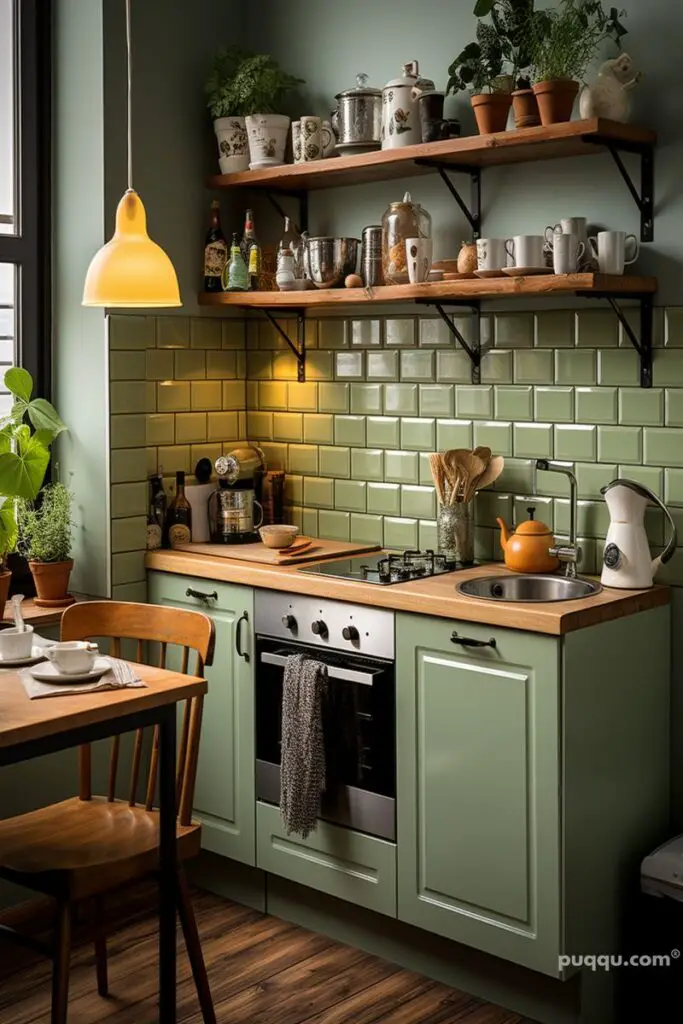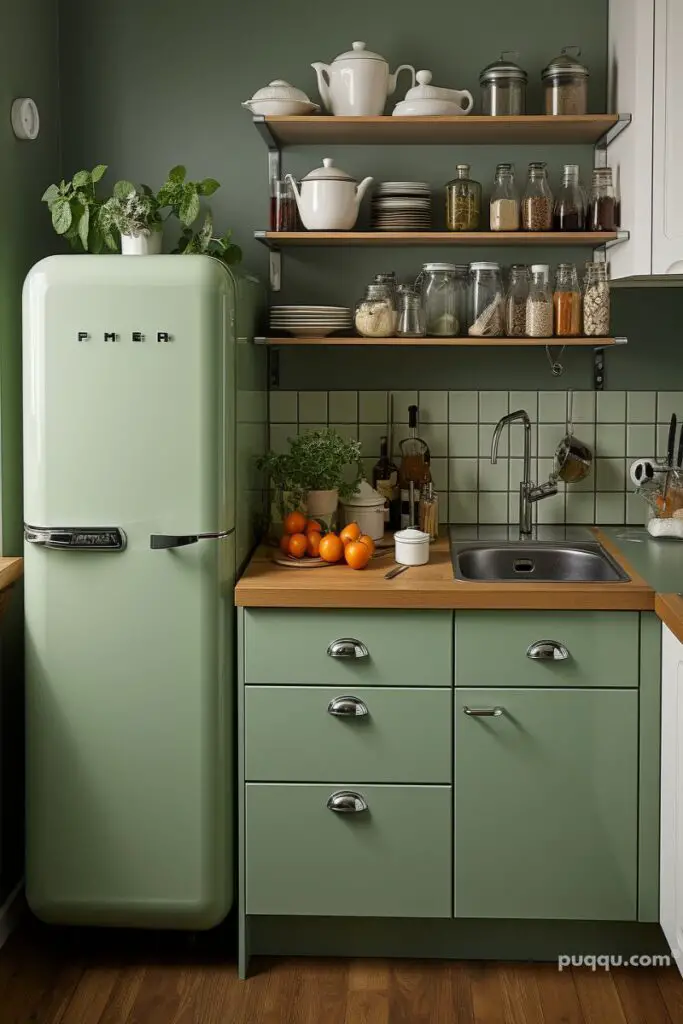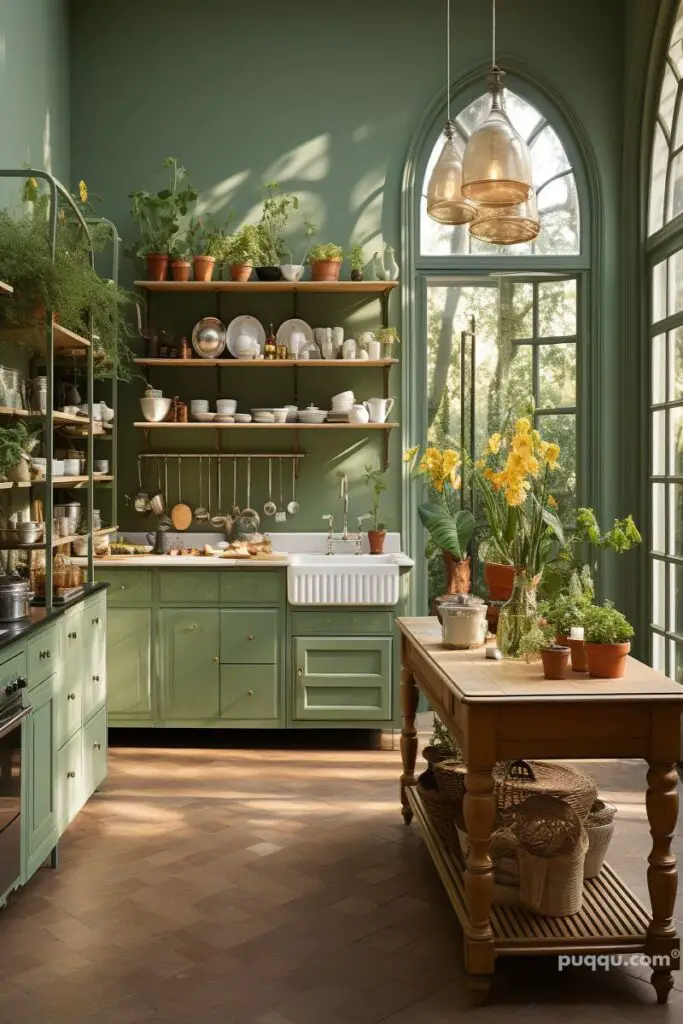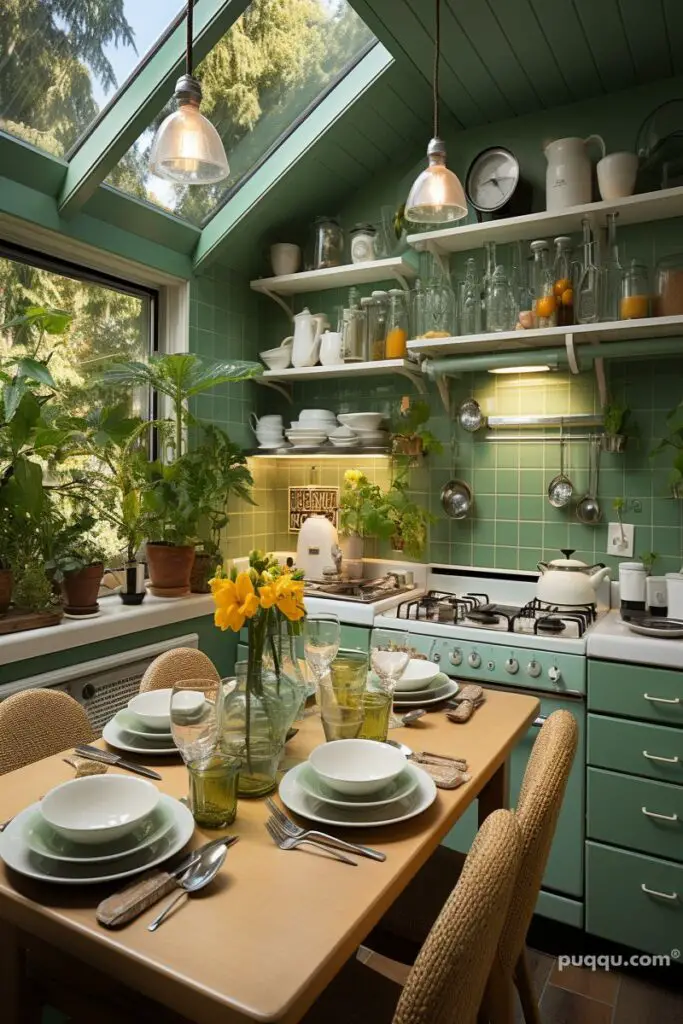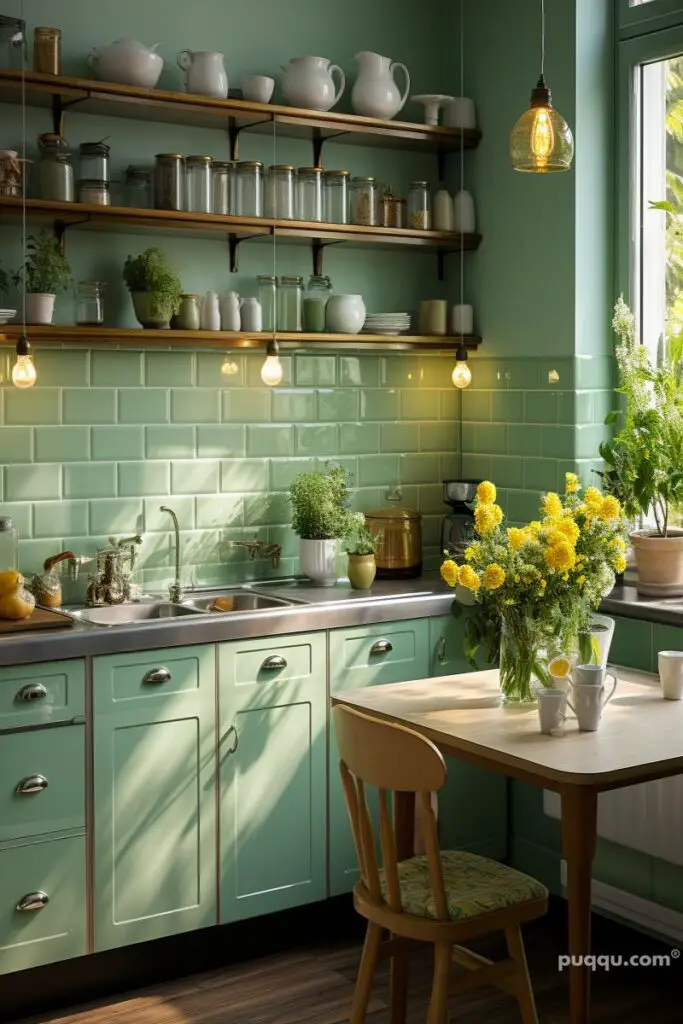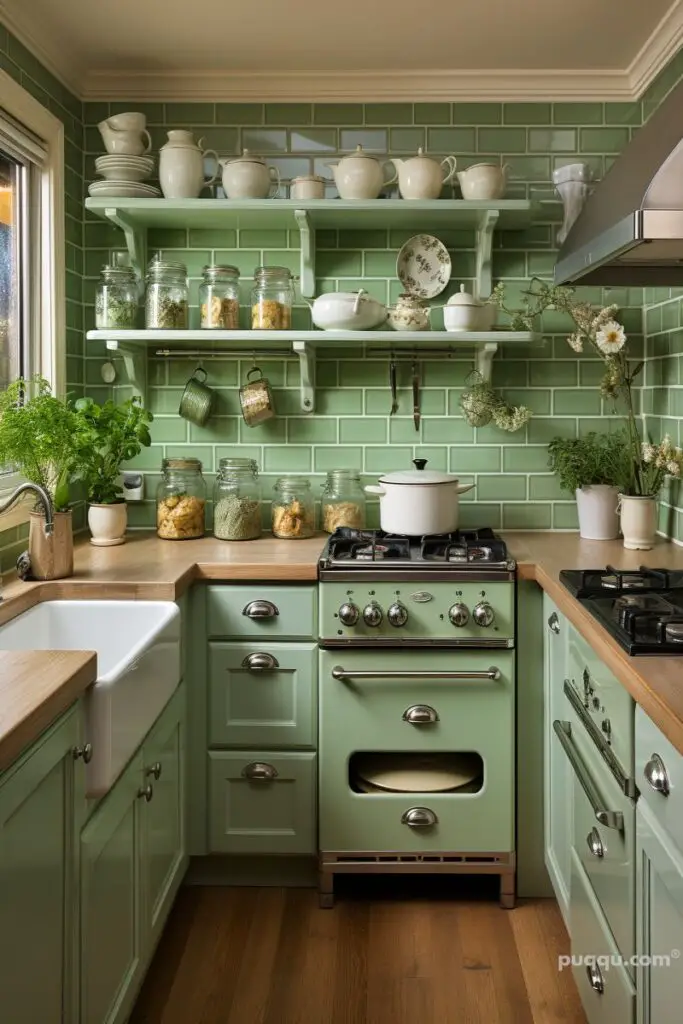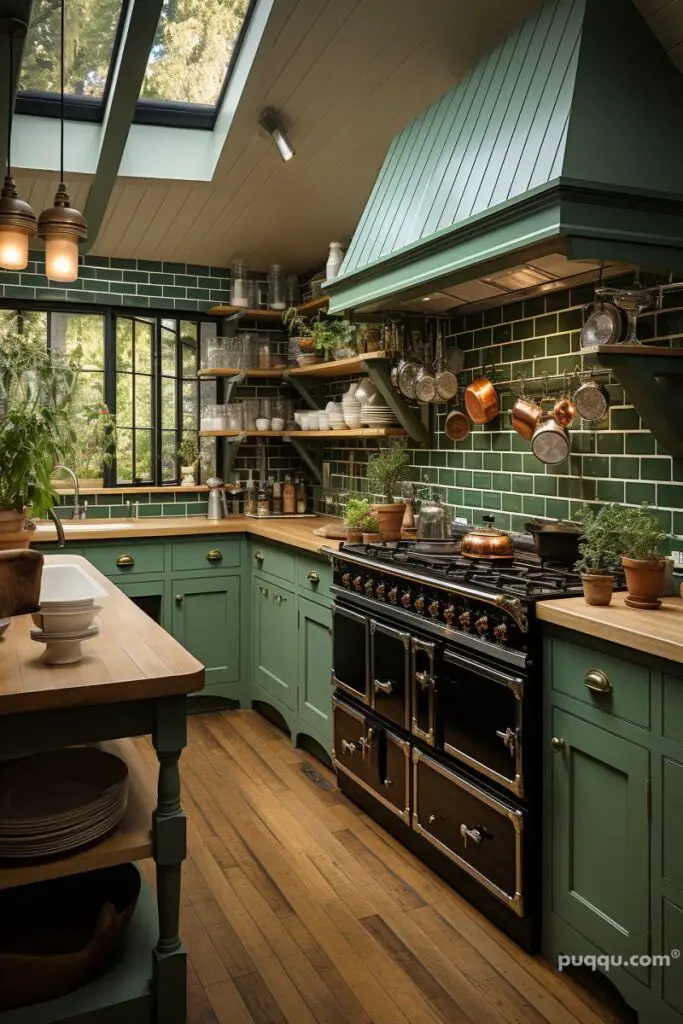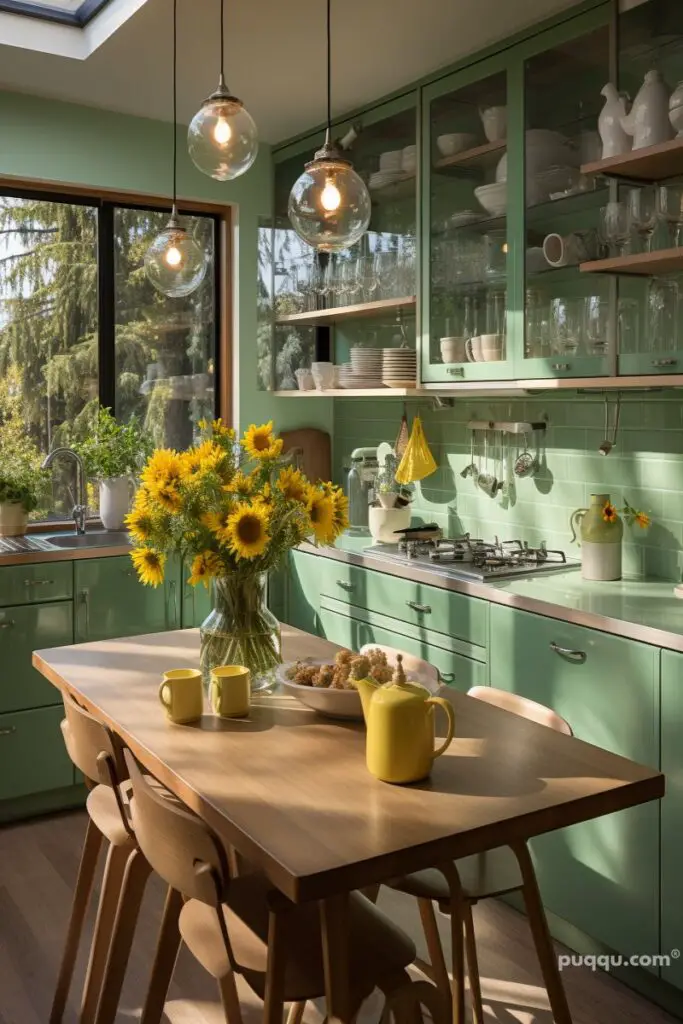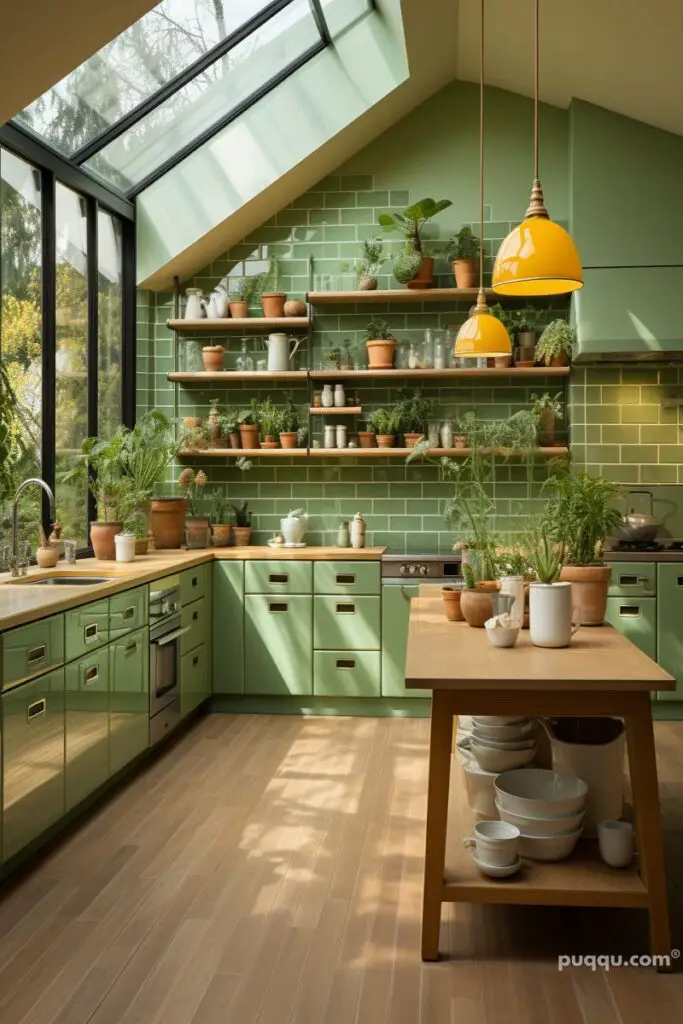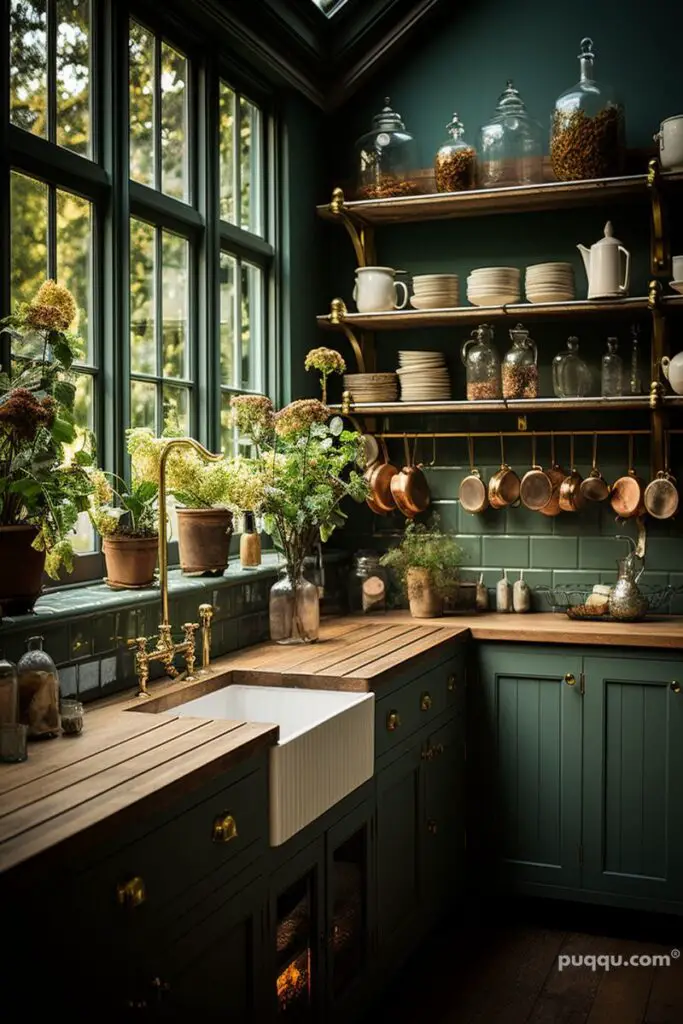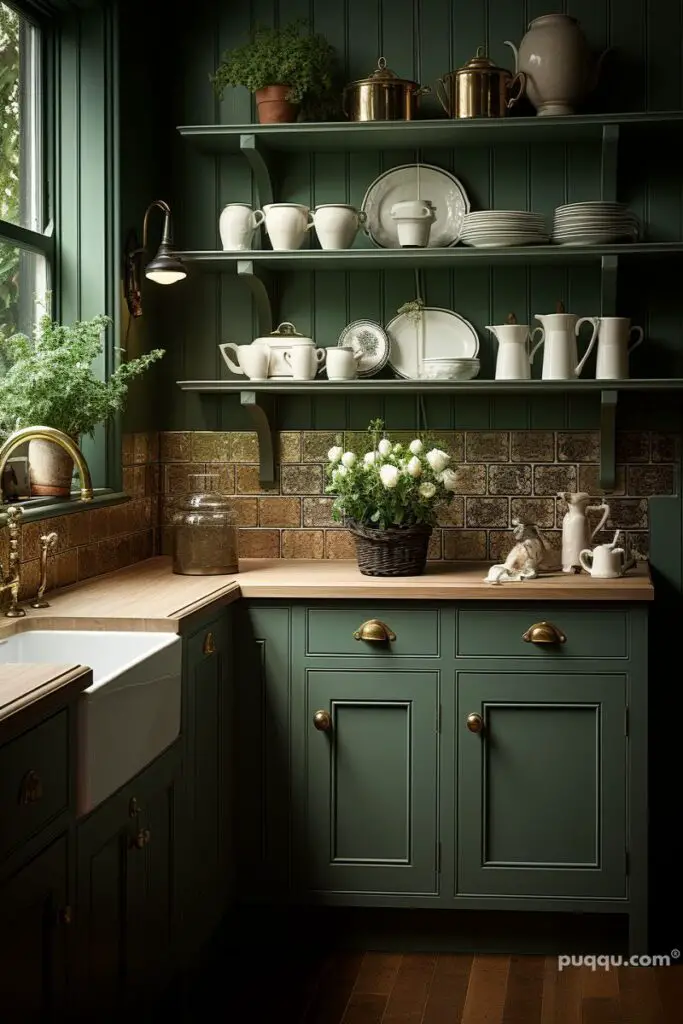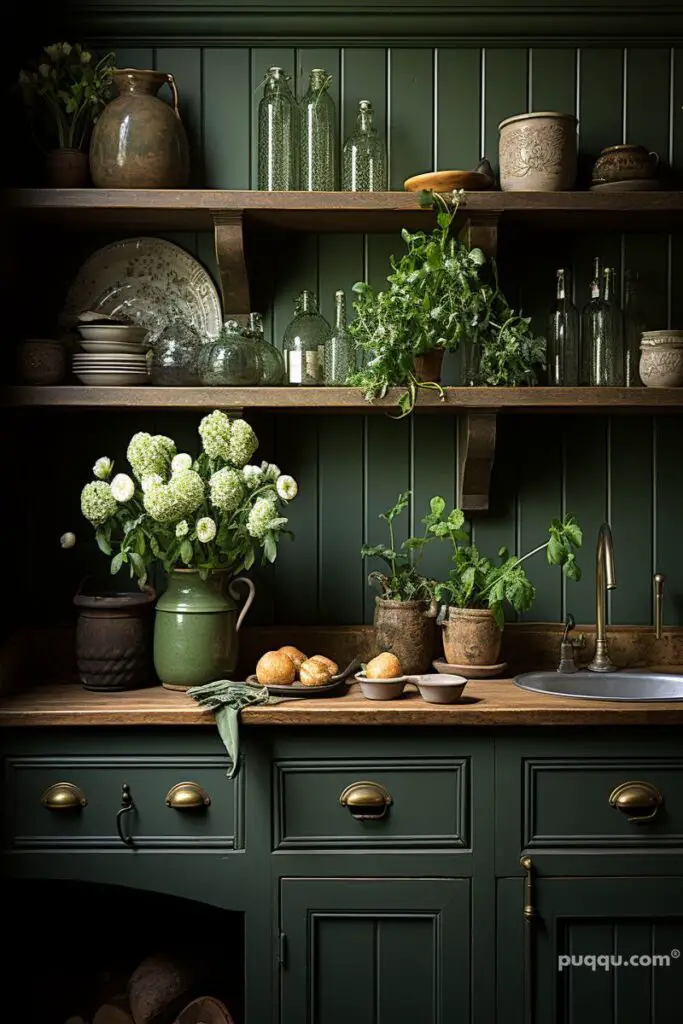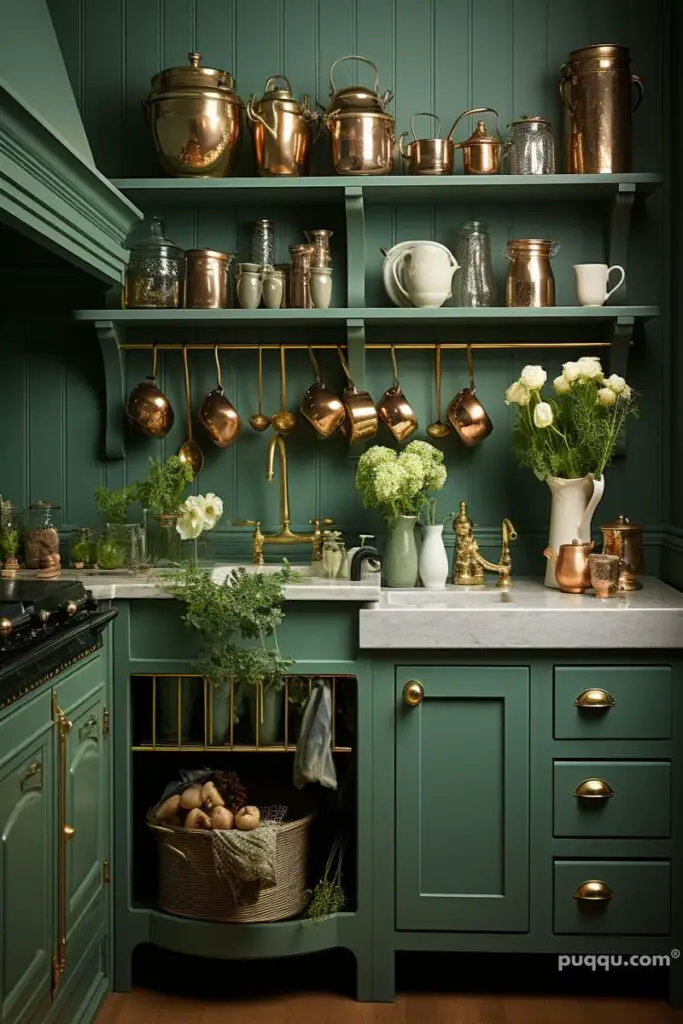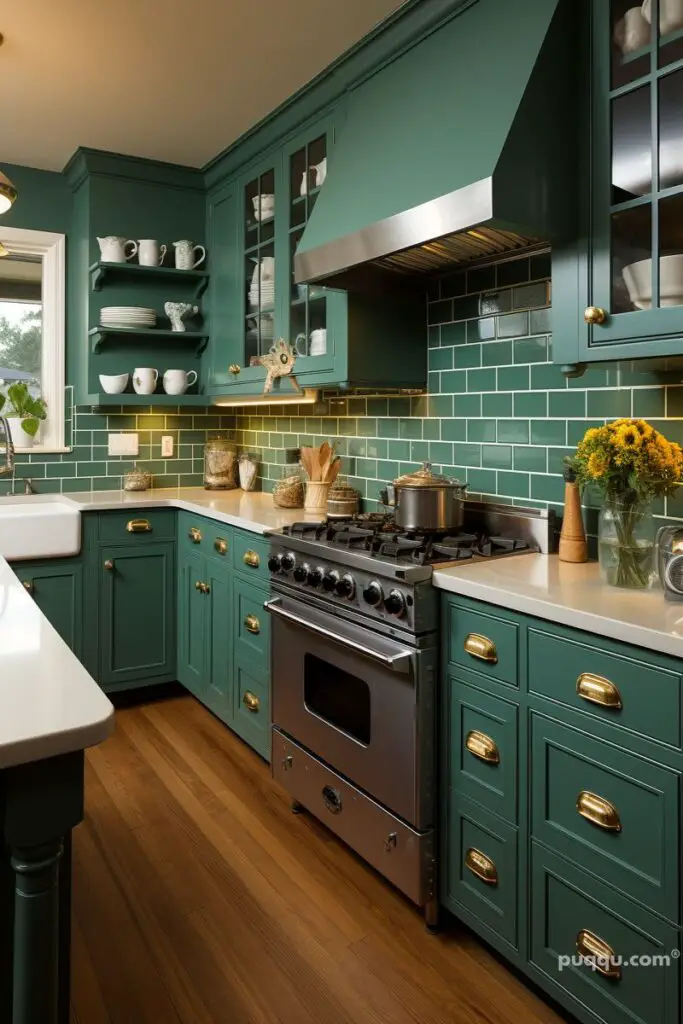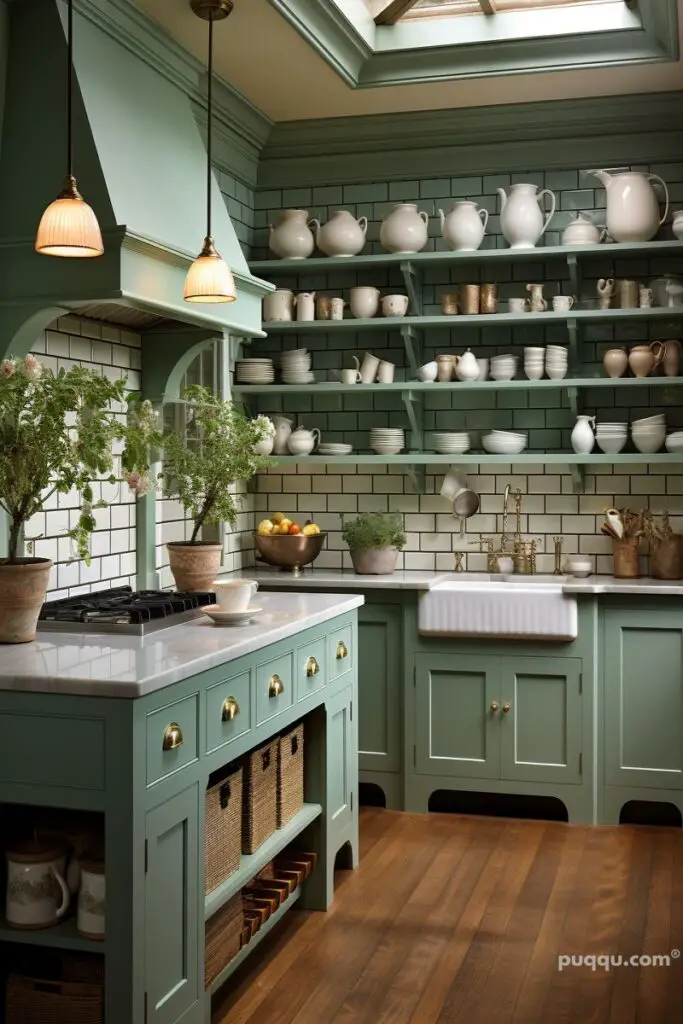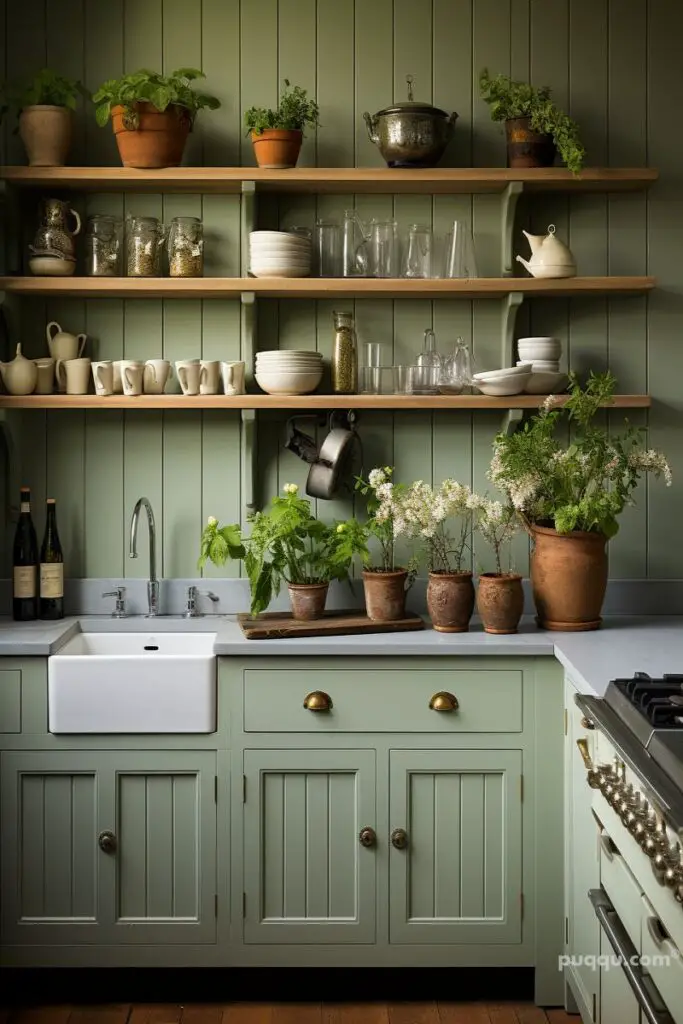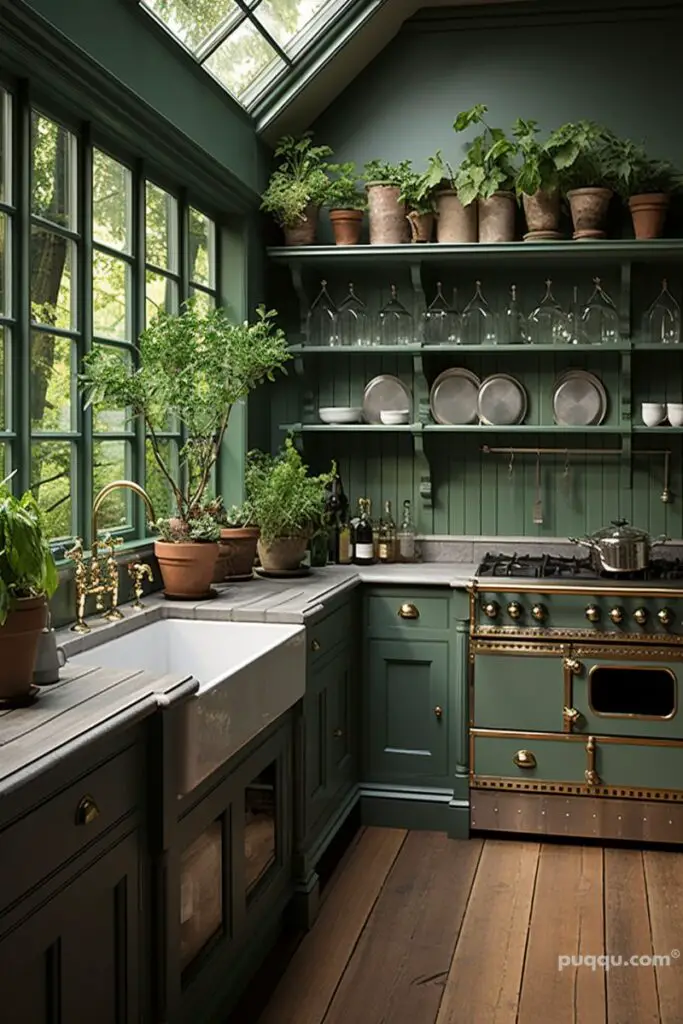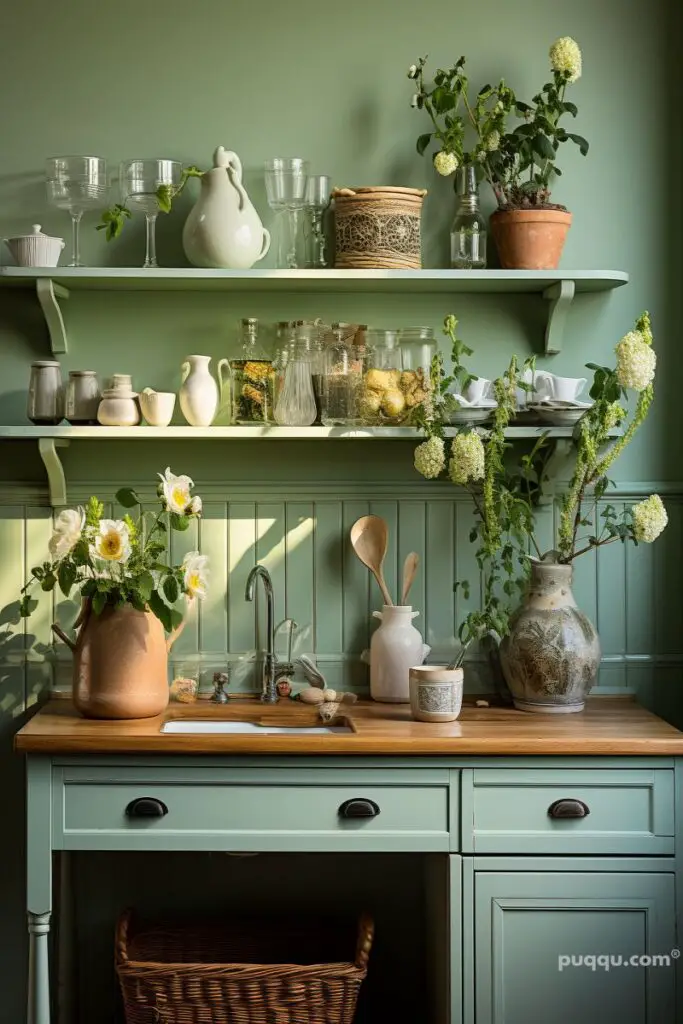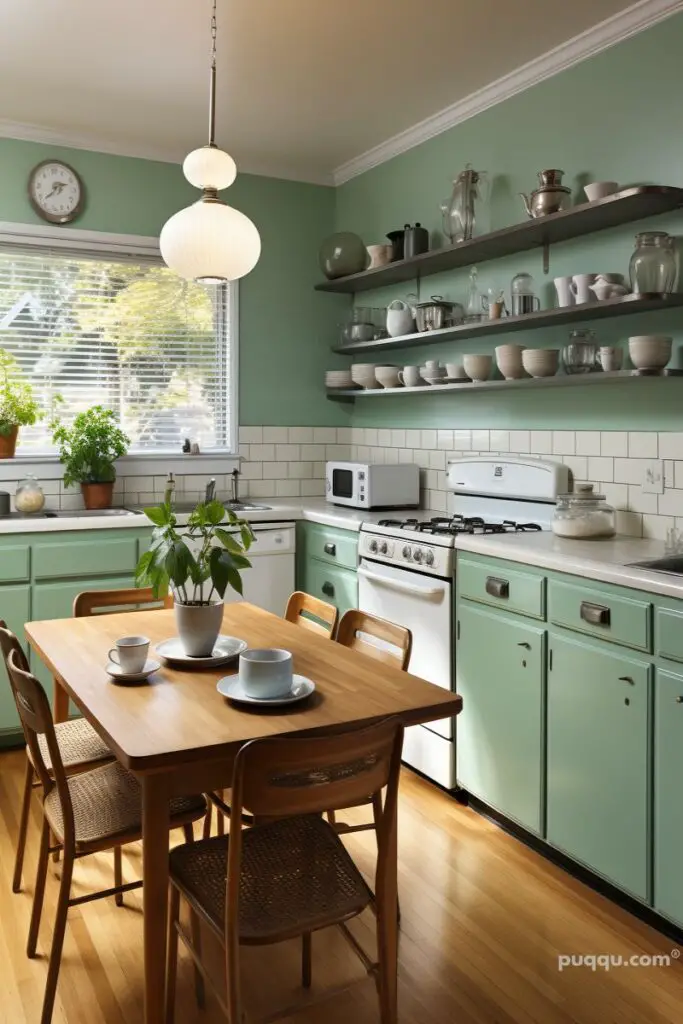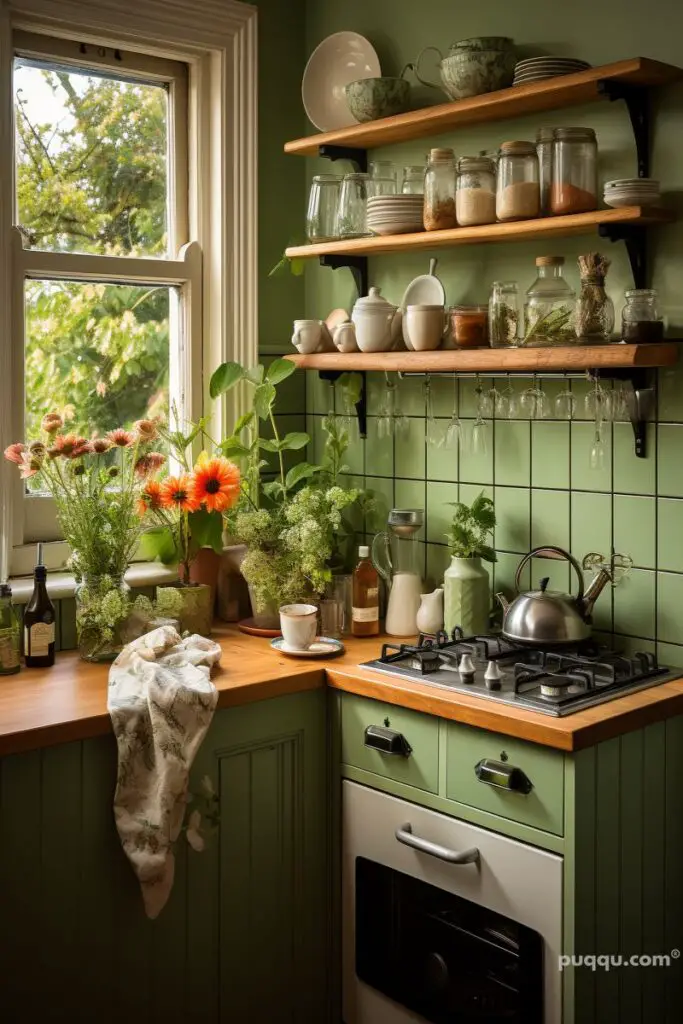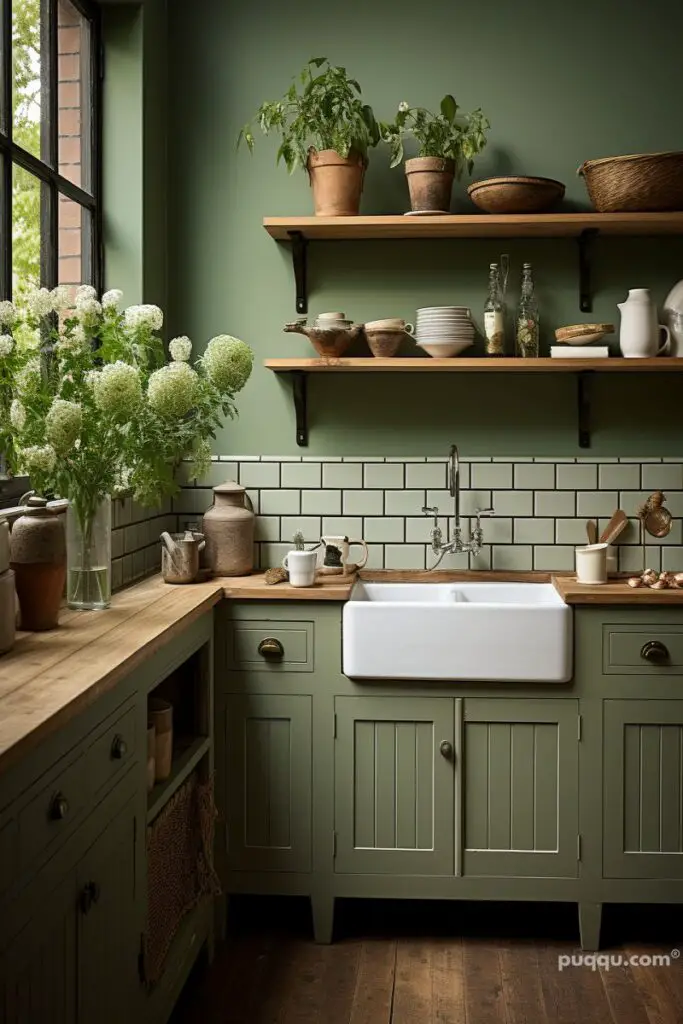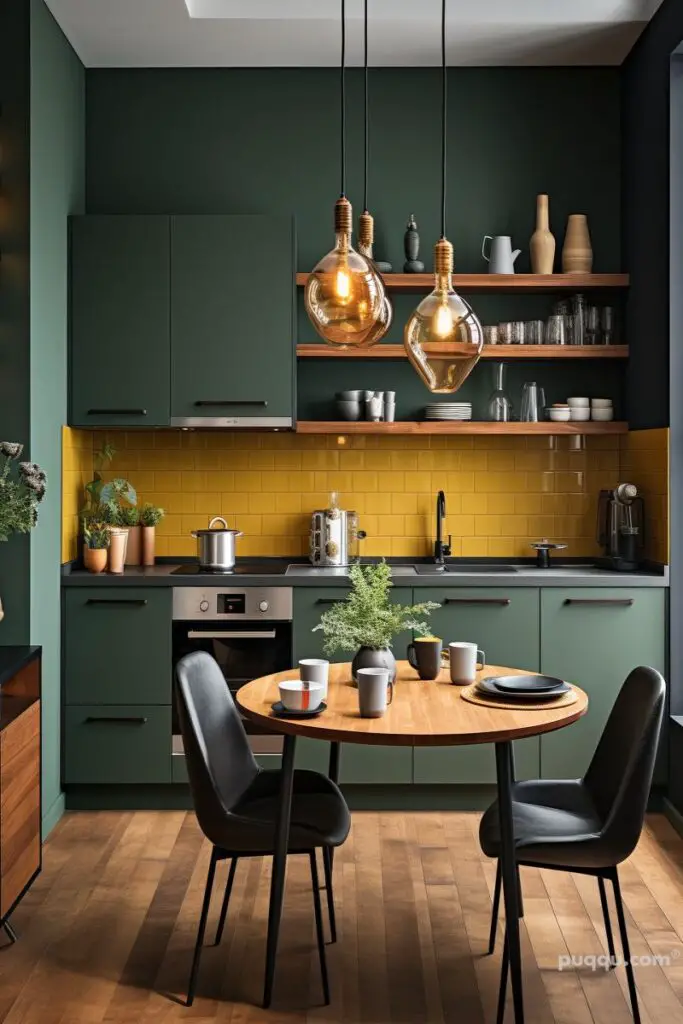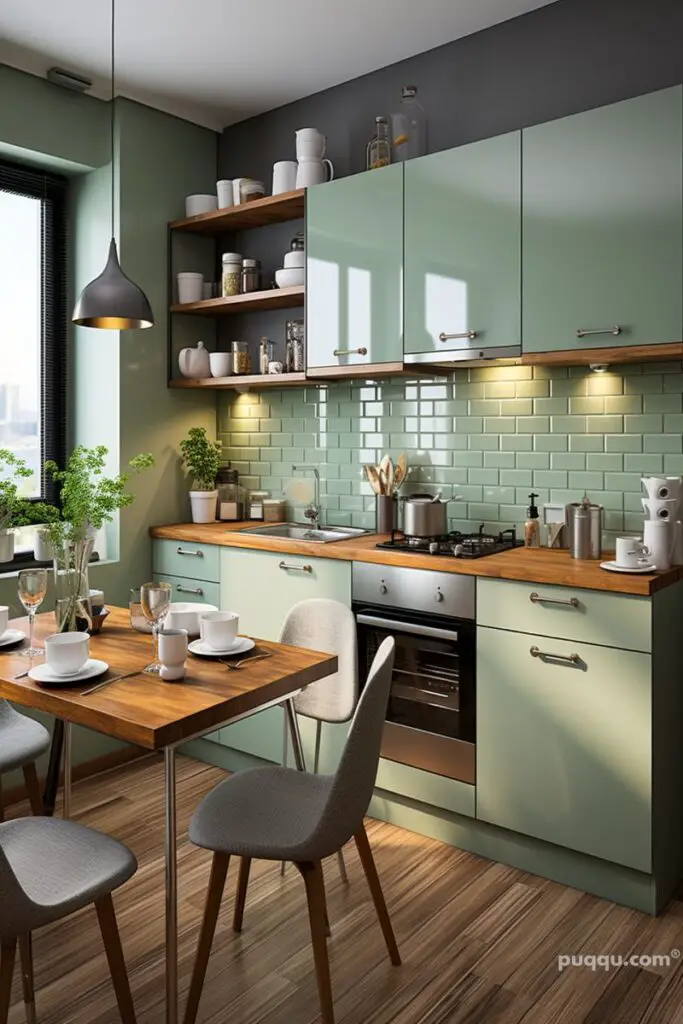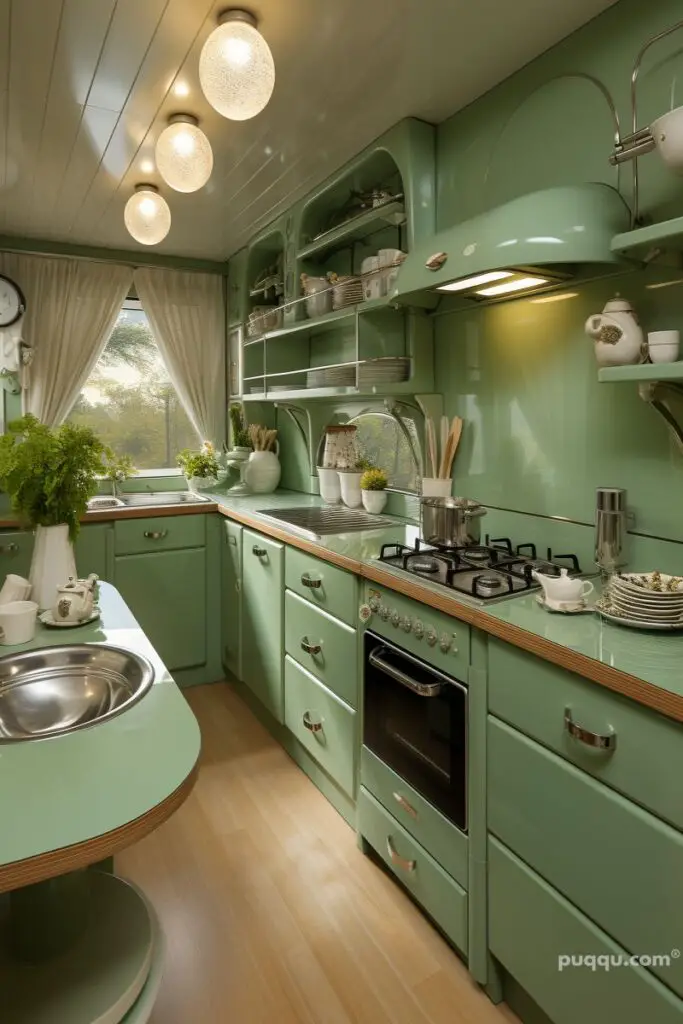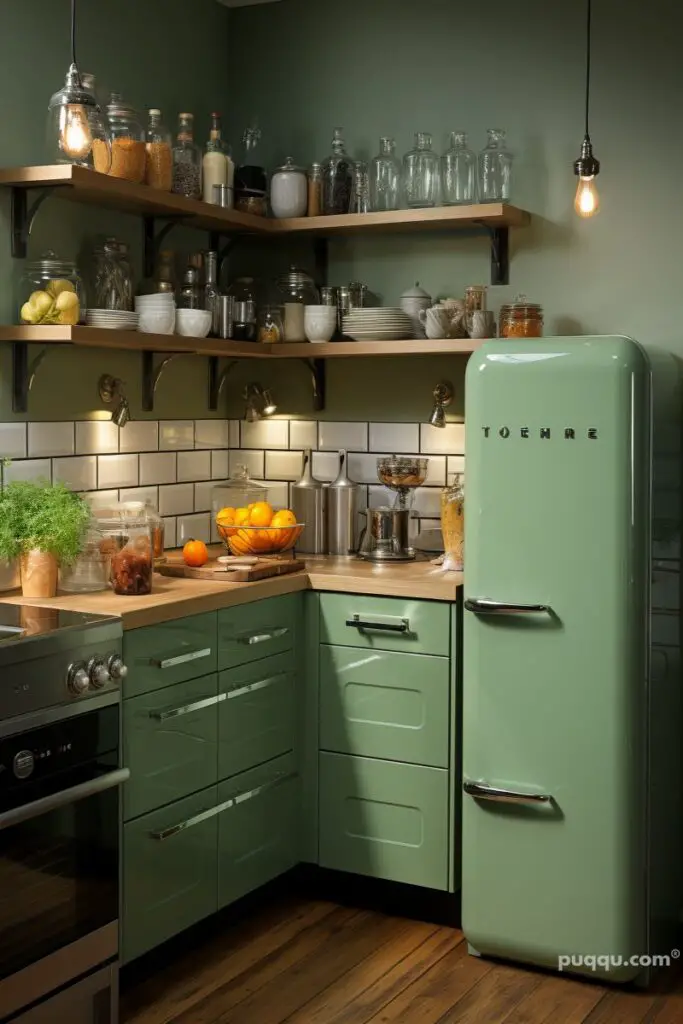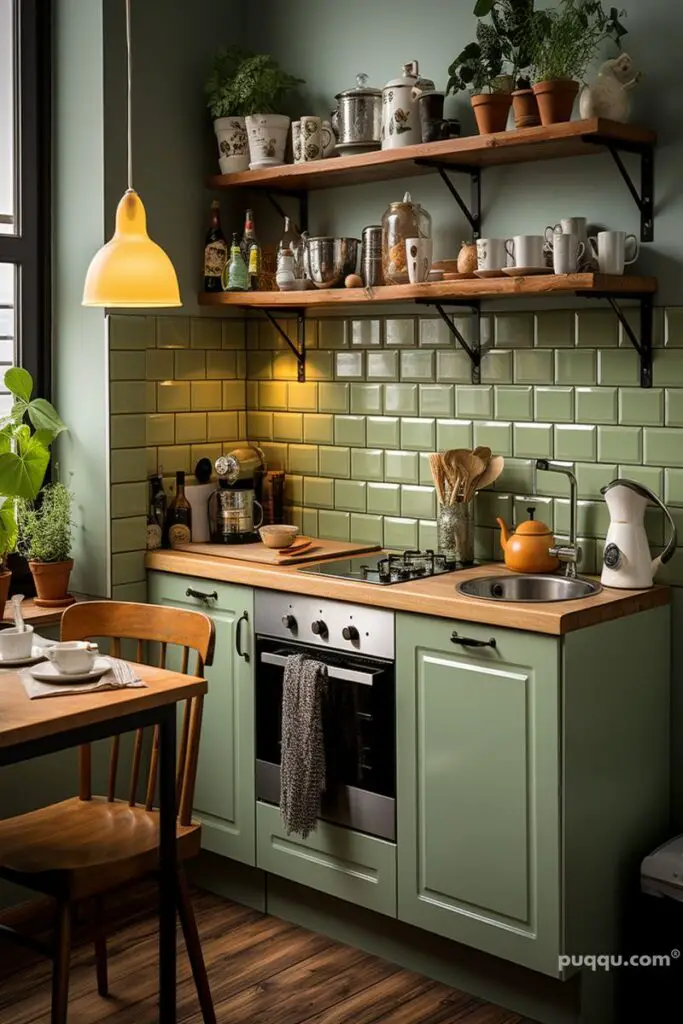Introduction
Green is a versatile color that can transform your kitchen into a fresh, inviting space. From soothing sage to bold emerald, the right shade of green can enhance your kitchen’s ambiance, making it a focal point of your home. In this guide, we’ll explore various green kitchen paint ideas to inspire your next renovation project.
1. Classic Sage Green
1.1 Subtle Elegance
Sage green is a timeless color that adds a touch of elegance to any kitchen. Its muted tone creates a calming atmosphere, making it perfect for creating a serene cooking space. Pair sage green with white or cream accents for a classic look.
1.2 Complementary Accents
To complement sage green, consider adding accents in soft neutrals like beige or light gray. Brass or gold hardware can add a touch of warmth and sophistication. This combination works well with natural wood elements and greenery.
2. Vibrant Olive Green
2.1 Bold and Inviting
Olive green is a rich, vibrant hue that can make a bold statement in your kitchen. This color works well in both modern and traditional kitchens, adding depth and character. Combine olive green with dark wood or matte black accents for a dramatic effect.
2.2 Warm Accents
For a cohesive look, incorporate warm accents like terracotta or copper. These colors complement olive green beautifully, adding warmth and a touch of rustic charm. Consider olive green cabinetry or an accent wall to make the color stand out.
3. Soft Mint Green
3.1 Fresh and Airy
Mint green offers a fresh and airy vibe, perfect for smaller kitchens or those with limited natural light. This light shade creates a sense of openness and can make your kitchen feel larger and brighter. Pair it with white or light gray for a clean, modern look.
4. Earthy Forest Green
4.1 Rich and Cozy
Forest green is an earthy, rich color that adds a cozy and sophisticated feel to your kitchen. It works well in larger spaces and can create a dramatic backdrop for lighter-colored accents. Consider using forest green on cabinets or an island for a striking look.
4.2 Classic Pairings
Forest green pairs beautifully with natural materials like wood and stone. Consider incorporating elements like a wooden countertop or stone backsplash to enhance the natural feel. Gold or brass fixtures can add a touch of luxury and contrast nicely with forest green.
5. Bright Teal Green
5.1 Fun and Energetic
Teal green is a vibrant, fun color that adds energy and excitement to your kitchen. This bold hue is perfect for those who want to make a statement and create a lively cooking environment. Use teal green on an accent wall or as part of a two-tone design for a striking effect.
5.2 Playful Accents
Complement teal green with playful accents like bright yellow or coral. These contrasting colors can enhance the lively feel of your kitchen and add a touch of fun. Consider colorful accessories, artwork, or patterned textiles to complete the look.
6. Muted Seafoam Green
6.1 Calming and Coastal
Seafoam green is a calming color that evokes a coastal vibe, making it ideal for creating a relaxed, inviting kitchen. Its soft, muted tone pairs well with light woods and white accents, creating a serene, beach-inspired look. Consider seafoam green for cabinetry or walls to create a tranquil atmosphere.
6.2 Coastal Accents
Enhance the coastal feel with accents like driftwood, seashells, or nautical decor. Light blue or sandy beige can also complement seafoam green, adding to the beachy ambiance. These elements can help create a cohesive, relaxing kitchen space.
7. Emerald Green
7.1 Luxurious and Dramatic
Emerald green is a luxurious, dramatic color that adds sophistication and depth to your kitchen. This bold shade works well in larger kitchens and can create a striking focal point. Use emerald green on cabinetry, an island, or as an accent color to make a statement.
7.2 Elegant Pairings
Pair emerald green with elegant finishes like gold, marble, or dark wood. These elements enhance the rich, opulent feel of emerald green and add a touch of luxury. Consider using emerald green with high-gloss finishes for an added touch of glamour.
8. Light Olive Green
8.1 Subtle and Serene
Light olive green is a softer version of olive green that offers a subtle, serene look. This shade is perfect for creating a calming environment in your kitchen, while still adding a touch of color. Combine light olive green with white or light gray for a refreshing and stylish look.
8.2 Balanced Accents
Enhance light olive green with balanced accents like soft gray or light wood. These colors complement light olive green while maintaining a balanced, harmonious look. Consider using light olive green for walls or cabinetry to create a tranquil, inviting kitchen.
9. Warm Chartreuse Green
9.1 Bright and Lively
Chartreuse green is a warm, vibrant color that adds energy and brightness to your kitchen. This bold hue is perfect for creating a lively, welcoming space. Use chartreuse green on an accent wall or as part of a colorful design to make a bold statement.
9.2 Vibrant Accents
Pair chartreuse green with contrasting colors like navy blue or charcoal gray. These colors can enhance the vibrancy of chartreuse green and create a dynamic, visually interesting space. Consider colorful accessories or artwork to complement the bold hue.
10. Cool Jade Green
10.1 Elegant and Refreshing
Jade green is a cool, refreshing color that adds an elegant touch to your kitchen. This versatile hue can create a calming atmosphere and works well with a variety of decor styles. Use jade green on cabinetry, an island, or as an accent color to create a sophisticated look.
10.2 Elegant Pairings
Pair jade green with complementary colors like white, silver, or light wood. These accents can enhance the elegance of jade green and create a cohesive, stylish space. Consider incorporating metallic finishes or glass elements to add a touch of luxury.
Conclusion
Green is a versatile color that can enhance your kitchen in numerous ways. From soothing pastels to bold emeralds, there’s a shade of green that can perfectly match your style and create the ambiance you desire. Consider your space, style preferences, and the atmosphere you want to create when choosing the perfect green paint for your kitchen.
FAQs
1. What is the best shade of green for a small kitchen?
Soft pastels like sage green or mint green are ideal for small kitchens. They create a sense of openness and brightness, making the space feel larger.
2. How can I incorporate green into a modern kitchen?
Consider using bold shades like emerald or teal green for cabinetry or accent walls. Pair these colors with sleek, modern finishes and complementary neutral tones for a contemporary look.
3. What colors pair well with green in the kitchen?
Green pairs well with neutrals like white, gray, and beige, as well as with complementary colors like gold, navy blue, and natural wood tones. These combinations can enhance the overall look and create a balanced, stylish space.
4. How do I choose the right green shade for my kitchen?
Consider the size of your kitchen, the amount of natural light it receives, and your personal style. Lighter shades create a sense of openness, while darker shades add depth and drama. Test paint samples in your space to see how they look at different times of day.
5. Can I use green in a traditional kitchen design?
Absolutely! Green can work beautifully in traditional kitchens. Opt for classic shades like sage or olive green and pair them with traditional elements like wooden cabinetry and vintage-inspired hardware for a timeless look.

